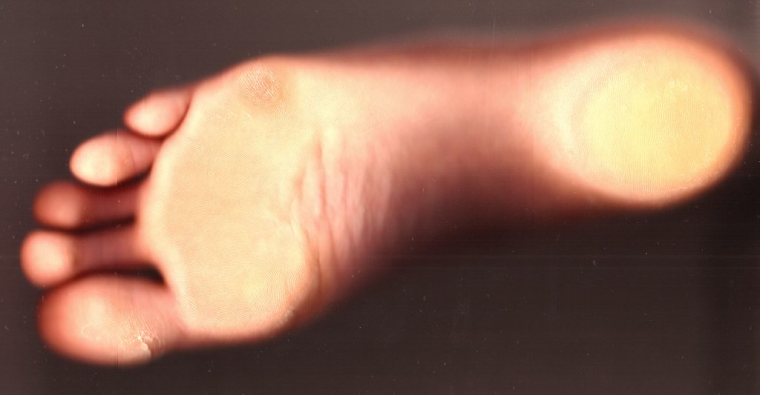
Neuropathic pain: diagnosis & treatment
Neuropathic pain is a frequent condition caused by a lesion or disease of the central or peripheral somatosensory nervous system (1) Neuropathy affects virtually any nerve with a wide range of symptoms. Nerves are essential to how the body works. They enable ű people to move, send messages about how things feel, and control automatic functions, such as breathing.
Neuropathy have several types, some involve the peripheral nerves, while others damage the nerves that supply the internal organs, such as the heart, the bladder, and the gut (Autonomic Neuropathy). In this way, it can affect many body functions. According to the National Institute of Diabetes and Digestive and Kidney Diseases (NIDDK) between 30% and 50% of people with diabetes have neuropathy, since a high level of glucose in the blood causes neural damages (2) Here we shortly introduce the types, diagnosis, and treatment of neuropathy.
The types of Neuropathy (3) are the following (4):
-
Peripheral Neuropathy: The most common form of neuropathy in patients which results from damage to the peripheral nervous system — the massive communications network that manages information between the central nervous system (the brain and spinal cord) to every other part of your body. This particular nerve damage affects areas such as your toes, feet, legs, fingers, hands, and arms.
-
Proximal Neuropathy: Proximal Neuropathy is the second most common form of neuropathy. This form of neuropathy encompasses nerve damage in your thighs, hips, or gluteal areas of your body. The condition usually affects one side of the body, but can spread to the other side as well.
-
Cranial Neuropathy: Cranial Neuropathy is a condition describing nerve damage to any of the 12 cranial nerves. The cranial nerves are those that travel from your brain or brainstem. These nerves affect areas like the face and eyes.
-
Autonomic Neuropathy: Autonomic Neuropathy occurs when nerves of your involuntary nervous system (the heart, circulation, digestion, sweat glands, bowel and/or bladder, and sexual organs) are damaged. While diabetes is the most common cause of autonomic neuropathy, other health conditions or infections can also trigger autonomic neuropathy symptoms.
-
Focal Neuropathy: One of the less common forms of neuropathy, Focal Neuropathy, sometimes referred to as mononeuropathy, affects a single nerve–commonly, those of the wrist, thigh, or foot, although it can sometimes affect the nerves of the back and chest, as well as those that control the eye muscles. Diabetes is often the root cause of this form of neuropathy.
Diagnosis
But how do you know if your pain is caused by neuropathy? As a first step, screening tools for the disease are patient-reported questionnaires mostly based on pain descriptors or combined questionnaires and simple clinical tests. They are widely used in daily clinical practice, especially by non-specialists to initiate a necessary further diagnostic assessment.
According to diabetic patients (DM: diabetes mellitus) bedside examination (BSE) is essential when suspecting polyneuropathy. Most guidelines advise yearly screening because diagnosis, unfortunately, is often late when irreversible nerve injury has occured and patients often have a developed diabetic foot ulcer at the first presentation (4). A thorough clinical examination, including inspection of the feet, evaluation of sensory loss, arterial pulses, skin state, pain assessment, and BSE is an advisable basis. For the vast majority of patients, the diagnosis is based on history and examination, without further necessary testing. These questionnaries are followed by confirmatory tests. They can be divided into structural tests (nerve biopsy, punch skin biopsy, corneal confocal microscopy) and functional tests (quantitative sensory testing, neurophysiological techniques).
Finally, not every neuropathy in patients suffering from DM has diabetic neuropathy. Dependent on clinical presentation, laboratory testing is advised to exclude the differential diagnoses, such as thyroid disease, autoimmune disorders, and infections (1).
Therapy
Since neuropathic syndromes are common complications of DM, therefore here we discuss the therapeutic opportunities of diabetic polyneuropathy (DPN) only.
There is a lack of treatments that reverse the underlying nerve damage causing DPN. Therefore, prevention of DPN is a key component of diabetes care (4,5) The recommendation of achieving optimal glucose control in type 1 and type 2 diabetes is to prevent or slow the progression of DPN.
Treatments mostly target symptoms and the underlying disease mechanisms to improve neuronal function. Duloxetine and pregabalin are the only treatments which have received regulatory FDA approval for the treatment of painful neuropathy.5 Whereas, the United Kingdom National Institute of Clinical Excellence recommends some other agents as well, such as gabapentin and amitriptyline (4) Gabapentin is efficacious for the treatment of pain and sleep interference in painful-DPN but has a high rate of side effects (4, 5, 6) Moreover, a network meta-analysis found it to be the most efficacious and safe therapy.
Pregabalin is recommended as a first-line agent by all the major treatment guidelines. Although recent statistics within England and Wales have found an increased number of deaths linked to pregabalin and gabapentin drug misuse prompting a reclassification in the control of these medications. There are several other treatments that have been studied and are prescribed for the disease with inconclusive evidence. Opioid class medications are an effective means for the treatment; however, the risk of addiction, side effects and psychosocial complications should limit their use (5).
The prevalence of DM is rising to epidemic proportions. Consequently, there will be a dramatic rise in the number of patients suffering from its chronic complications, including neuropathy. The current management strategy is focused upon early detection of the condition and prevention of diabetic foot syndromes. New diagnostic techniques may aid the clinical assessment in detecting clinical and subclinical diabetic neuropathy (4).
Don’t forget, the take-home message is: patients with diabetes should visit often their GP achieving optimal glucose control, take part in medical tests and examinations in order to detect the early phase of neuropathy.





0 Comments